Machine failures can result in severe lost productivity and, in turn, lost revenue. When a machine can’t produce what the company makes due to lack of maintenance, it means it will have zero sales.
You can reduce the impact of machinery and equipment failures and maintain your bottom line by just making sure to perform regular machine cleaning and maintenance. Here’s an overview of the most common types of packaging machine maintenance and how they’re performed.
1. The importance of packaging machinery maintenance
The need for preventive maintenance and repair of packaging machines cannot be underestimated. Every secondary packaging business is looking for ways to reduce costs while increasing productivity, especially in this era of automation and increased demand for fast shipping times.
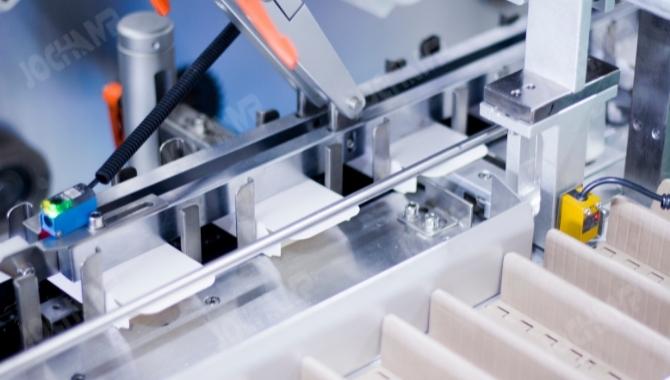
Investing in automated secondary packaging machinery such as palletizers, stretch wrappers, shrink wrappers, packers, case packers, tapers, and laser-guided vehicles is an effective way to do this. All these useful improvements require regular maintenance.
Immediate problems can arise if packaging machinery is not properly maintained on a regular basis, or after being shut down for several months. Let’s take a look at the importance of having a high-quality packaging machinery repair and maintenance service.
- Improve machine efficiency.
Your machine can fail when you least expect it. Regularly scheduled PMs will help you avoid situations like this. But it shouldn’t end in routine maintenance, regular operator care of your packaging machine may help you become more productive during scheduled downtime.
Machine operators should be able to spot potential problems with the machines they use every day. If the problems are simple, they should also know how to correct them, or seek help before causing further damage.
- Cut costs.
Downtime occurs unexpectedly and without warning, leading to unintended and unpleasant consequences. These costs can range from lost productivity to additional costs associated with damaged parts that could have been avoided with proper preventive maintenance. Missed shipments and dissatisfied stores and customers can add additional costs.
Regular preventive maintenance gives you control over your output and significantly reduces the money you will spend on maintenance and repairs in the long run.
- For security reasons.
Regular preventive maintenance on a packaging machine also allows technicians to check the operation of electrical and safety systems, as well as gain insight into any threats the machine may pose.
Preventive maintenance not only saves money, it also increases company reliability and provides a safer work environment for employees. If you are interested in learning more about protecting your capital investment, please give us a call.
- Improved reliability.
You can trust the efficiency and components of your packaging machines to function well if they are well maintained. Know which parts in your machine wear the fastest, and the capabilities of each packaging machine, so you can predict which parts will wear out, and how long the worn parts will run.
This allows you to make changes before they kill the output. If your machines are kept in good working order, customers will have confidence in your ability to meet their product and supplement needs. Preventive maintenance ultimately makes your customers happy and satisfied.
- prevent any potential problems
Routine maintenance of your packaging machine will help you with any difficulties and solve any problems before they become a crisis. Some machine repair companies specialize in other machines, including semi-automatic and automatic stretch wrapping.
They have diagnostic functions that will notify you of scheduled maintenance, emergency stops and activate alarms. This is important because it will allow you to deal with anticipated or current issues in a timely manner with less downtime.
- Reduce environmental footprint.
During the maintenance of the packaging machine, the pre-stretch rate of the packaging machine is closely monitored. Doing so will ensure optimal film consumption and lower rejection rates.
The result will be lower overall consumption. Preventive maintenance also reduces waste due to poor packaging by making the most of the time and resources allocated to production and shipping.
2. Packaging machine types and maintenance
Most companies have reopened, and packaging lines across the country will soon begin production. After months of unplanned shutdowns due to the novel coronavirus (COVID-19) virus, many businesses are rushing to restart packaging processes and resume normal operations. Knowing the types of maintenance on your packaging machine can help your production.

Pouch Packaging Machine
1) preventive maintenance
Preventive maintenance refers to regular, routine maintenance of equipment to avoid equipment failure. These responsibilities include conducting routine inspections, reporting equipment problems, and replacing parts before they fail.
The basic purpose of preventive maintenance is to identify and deal with small problems before they become major problems.
2) Preventive Maintenance Example
The following is a good example of preventive maintenance:
Over time, the aviation sector has refined its approach to preventive maintenance. Before an aircraft is allowed to fly, it must meet certain maintenance standards. If the system fails, the plane can be grounded. Boeing 737s, for example, have been grounded for nearly a year due to flawed safety systems.
Maintenance work cannot wait for an aircraft to break down, as flight accidents are always fatal. The failure of the equipment must be prevented. Over the years, the industry’s strong preventive maintenance policies have greatly reduced the incidence of accidents.
3) why it matters
Most of us have no idea why preventive maintenance is important to our packaging machines.
Read on to find out all the importance involved in preventive maintenance.
- Cut costs.
Downtime occurs unexpectedly and without warning, leading to unintended and unpleasant consequences. These costs can range from lost productivity to additional costs associated with damaged parts that could have been avoided with proper preventive maintenance.
- Improve machine efficiency.
Unfortunately, there are situations where you don’t want your machine to fail, but it does.
Scheduling regular machine maintenance can help you avoid unexpected breakdowns and increase the efficiency of your machine.
- Improve reliability.
Knowing your process and the capabilities of each packaging machine allows you to better predict which parts will wear out, and how long those worn parts will run. This also allows you to make changes before they kill the output.
4) Advantages of Preventive Maintenance
Routine preventive maintenance keeps your facility running smoothly and provides you with peace of mind. The following are seven benefits of preventive maintenance.
- Increase the life of the asset.
Maintaining your equipment in good working order allows it to run longer and reduce costs.
This will make your assets last longer and serve you efficiently.
- Malfunctions are unlikely.
By planning maintenance ahead of time, you can greatly reduce the risk of equipment failure, giving you peace of mind as a facility manager.
- Increase your productivity.
Equipment that undergoes frequent preventive maintenance not only lasts longer, but also operates more efficiently. When all the machines can run more efficiently, it greatly boosts the company’s overall production.
- Reduce unplanned downtime.
A preventive maintenance program can greatly reduce downtime by scheduling work in advance. The machine will operate normally and will not stop production.
- Encourage good health and safety.
Keeping accurate records and performing preventive maintenance can help the health and safety of your equipment.
- Increase consumer loyalty.
Preventive maintenance to avoid breakdowns and maintain product quality, ensure consumer satisfaction, and thus enhance brand image.
- Spend less money.
All of the above considerations point to one final benefit of preventive maintenance: it saves money. Unplanned maintenance is typically 3 to 9 times more expensive than planned maintenance. If you don’t take preventive maintenance, you’ll spend more money on unnecessary repairs.
5) malfunction repair
Breakdown maintenance is a method that simply involves performing maintenance chores after a project fails. It is only necessary to perform maintenance work when it is necessary. For example, once the water heater fails, you can repair or replace it.
3. The difference between preventive maintenance and breakdown maintenance
A distinction can be made between preventive maintenance and breakdown maintenance. Read below about Preventive maintenance versus breakdown maintenance. Breakdown maintenance is only performed when an asset fails or is down, while preventive maintenance is scheduled maintenance work based on a defined time.
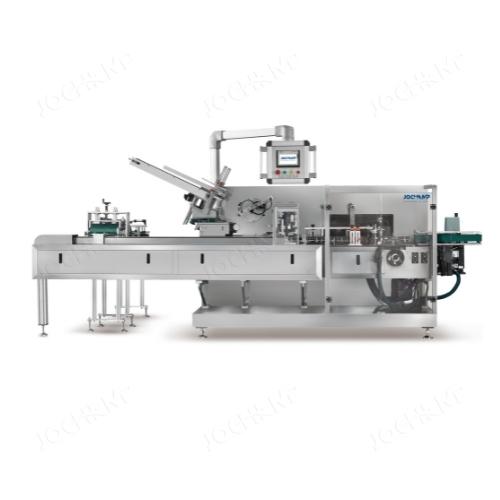
Preventive maintenance is important. With routine scheduled maintenance, any problems can be identified before equipment failure or downtime. Breakdown repairs require the use of equipment until the equipment fails, and then repairs and maintenance.
Preventive maintenance follows a schedule where maintenance work is performed at predetermined intervals before downtime occurs. This is because the purpose of preventive maintenance is to extend the life and uptime of equipment.
Since breakdown repair is not applicable to all types of equipment, it is fairly specialized.
For example, it’s not a sensible strategy for important or core pieces of equipment, and it’s not a viable strategy for anything involving human safety and health.
Work orders for checking, lubricating and replacing filters and components are included in preventive maintenance, while breakdown maintenance requires careful planning and execution to avoid losses, according to the manufacturer’s recommendations.
For example, an equipment technician would replace a burned-out light bulb.
1) Troubleshooting Example
The most common application for planned breakdown repairs is on low-cost, non-essential equipment components. Organizations are free to purposefully choose to run to a failure as long as the failure does not compromise health and safety. When it comes to failure maintenance examples, the following scenarios are ideal:
- Assets with short life cycles such as batteries and high flow pumps.
- Non-critical equipment such as hand tools
- irreparable machine
- Inexpensive or disposable items, such as light bulbs
2) Advantages of Troubleshooting
Troubleshooting comes with many benefits. The following are the advantages of breakdown repair. Check it out.
- Reduce unplanned downtime.
By catching maintenance problems early, breakdown maintenance planning can greatly reduce downtime.
- Increase your productivity.
Equipment that receives breakdown repairs in a timely manner without delays will always last longer and operate more efficiently.
3) why it matters
Troubleshooting is very important to your company as it will facilitate your production process. How does it facilitate your production process? Since breakdown maintenance involves repairing a machine that is not running, this will improve your overall productivity.
4) Maintenance
Corrective maintenance involves repairing equipment and systems that are not functioning properly. Corrective maintenance is a technique for repairing damaged systems.
Corrective maintenance can be described in two ways: faulty maintenance or unresponsive maintenance.
5) Troubleshooting Examples
Corrective maintenance can be performed on a variety of machines, systems and processes.
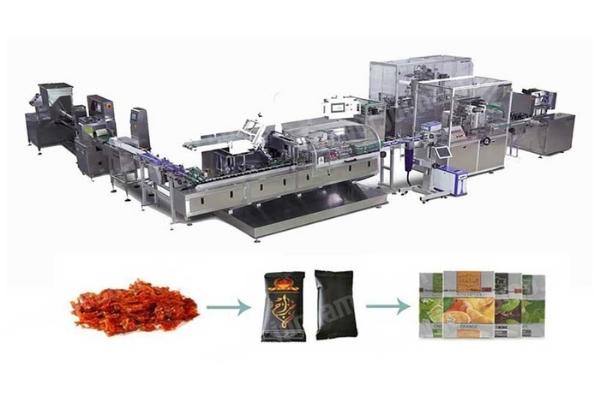
Here are some examples of corrective repairs:
line production. During preventive maintenance of production equipment, technicians find severe wear on critical components or components. A corrective maintenance order to repair or restore the part may be issued next month.
6) Difference Between Correction and Troubleshooting
The most notable difference is that breakdown repairs are performed on non-operational equipment. Corrective maintenance is performed on equipment that is still operating to some extent but will not reach its full capacity until it is serviced.
7) Advantages of Corrective Maintenance
Since the goal of corrective maintenance is to repair the asset so that it can function efficiently, many advantages can be achieved. Below is a list of the most important benefits of corrective maintenance:
- Reduce the number of urgent maintenance requests.
If corrective orders can be completed quickly after they are initiated, a business can reduce the number of emergency maintenance orders it creates.
- Improve employee safety.
In some cases, these defects are discovered and flagged for corrective maintenance, which can have serious safety implications for those working near the problem asset.
- Extend the useful life of assets.
Corrective maintenance combined with good preventive maintenance can help a company’s assets last longer. Early detection of machine errors and early repairs will minimize further machine failures. This will keep the machine at your service for longer at your company.
8) why it matters
Corrective maintenance plays an important role in the overall performance of your machine. it is Importantly, it increases the efficiency and work rate of your can packers and pouch packers by correcting accurate default parts of the machine.
9) scheduled maintenance
Use the original manufacturer’s guidelines and recommendations for scheduled maintenance. These recommendations are based on experimental data. Often, when equipment is first purchased, manufacturers provide statistics and guidelines that include average life data for the entire system and its individual components. The manufacturer will tell you how often parts should be inspected, repaired, and replaced.
10) Example of Scheduled Maintenance
Examples of scheduled repairs include:
- Change the oil on different machines continuously, according to the manufacturer’s recommendations. Different packaging machines should always be lubricated to make them work efficiently. Regular oil changes are one of the scheduled maintenance that every manufacturer will recommend to their customers.
- Regular replacement of auto parts from packaging machines is another example of scheduled maintenance.
- Service your machine at regular intervals as recommended.
11) why it matters
The main importance of scheduled maintenance is to take early preventive measures and follow the manufacturer’s instructions to perform maintenance in a timely manner. This will prevent your machine from catastrophically breaking down and repairing it will cost even more.
12) Advantages of scheduled maintenance
All the work has been done for you; All you have to do now is complete the tasks strictly according to the schedule. This timeline should be fine as it is based on the manufacturer’s expertise and ongoing research on their products.
A machine doesn’t have to fail to have a financial impact on a company.
Unrecognized defects can limit the efficiency of the machine, resulting in lower output or lower quality of the final product.
This can have an impact not only on sales, but on the reputation of the company and production facility.
The safety consequences of machinery and equipment failures outweigh the financial costs. Machines that are usually fairly safe to operate can become dangerous if not maintained regularly.
3. Maintenance Tips for Packaging Machines
- Check your packaging machines frequently.
Preventive maintenance is the key to extending the life of your packaging machine. In order to avoid problems with your machine before it does, it is vital to have a regular maintenance schedule in place. Doing so will also help reduce unplanned and expensive downtime. Make sure to check the wear parts of your packaging machine regularly.
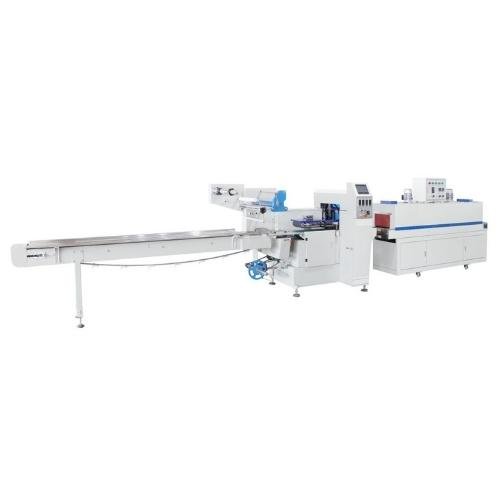
- Consider upgrading your packaging machine from time to time.
Because technology is advancing so rapidly, you will definitely need to upgrade or replace parts of your packaging machine to stay relevant and functional. It is critical to keep in touch with your packaging machine manufacturer to learn about necessary equipment improvements or whether a particular product is being phased out.
- Choose a trusted packaging machinery manufacturer or supplier.
Before purchasing a packaging machine, the manufacturer or supplier should be carefully selected. Once the packaging machine fails, the manufacturer or supplier will provide technical support.
When your packaging machines are offline, every second counts. And the longer your machines fail, the more money your company loses. That’s why it is necessary to work with a reliable manufacturer or supplier who can help with both electrical and mechanical aspects.
4. Where is the packaging machinery repair service?
There are several companies that offer maintenance and repair of packaging machines. Picking the best among them is quite a challenge. But there are some factors that should be considered before making a decision. For example, the quality of machinery, reliability and experience of technicians. The following recommendations are based on the capabilities described above.
1) Manufacturer
Another option is to use a manufacturer for preventive maintenance and repair services for packaging machinery. Manufacturers often hire service technicians who are very proficient in the products they create and sell. Because they often work exclusively on one brand of equipment for years, a manufacturer usually
has the greatest experts for their unique brand.
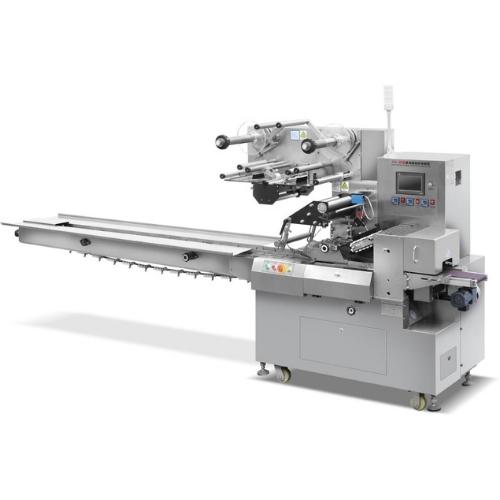
Jochamp takes packaging more seriously than anyone in the packaging industry.
As a supplier of packaging machines, the company ensures that each machine is carefully wrapped in plastic film. m and hardwood. The securing mechanism is integrated into the equipment to prevent movement during transport, ensuring the machine is in good working order when it arrives at the customer.
Before delivery, Jochamp installs all of their can stitchers so that the customer gets them when they are ready to use. For other machines, installation instructions are also available online.
If on-site installation is required, their engineers will assist you in installing and testing the equipment to ensure efficient and safe operation of the equipment. All of our electronic components are manufactured by world-renowned companies, allowing you to buy and replace them at any time if needed.
2) local dealer
Packaging distributors are an excellent alternative to packaging lines and machinery from numerous manufacturers because they are brand agnostic and typically sell multiple types of machinery. Jochamp designs, develops and sells packaging equipment such as can filling cans, sealing machines, capping machines, labeling machines, and pre-made pouch packaging machines.
The organization is always looking for distributors who can sell and service packaging machines in different regions. Their commitment to the gold standard is to help customers expand their can packaging machine business. Jochamp is easy to use, fully transparent and able to provide excellent conditions to help clients achieve your company goals.
3) Maintenance Company
Packaging companies can choose to hire their own preventive maintenance and repair specialists, or they can rely on third parties through their network of partner companies. While many companies offer excellent and reliable packaging machinery repair services, they may charge additional fees.
Especially if they hire third-party OEMs, distributors, or other third-party partners to meet your service needs. If you already use a packaging integrator for your packaging line, or if they are partners with other vendors you do business with, it may make sense for your company to use a packaging integrator to provide their services.
4)Conclusion
As you can see, it’s better to spend a small amount of money on regular maintenance than a lot of money when the machine breaks down. When looking for a repair and preventative maintenance supplier for your packaging machine, it’s always a great thing to check out a few different companies.
Cost, location, service time, availability of technicians and any other factors that are critical to the performance of the packaging process should all be taken into account.
Other Related Information:
For all your carton folding machine needs, contact us now.


